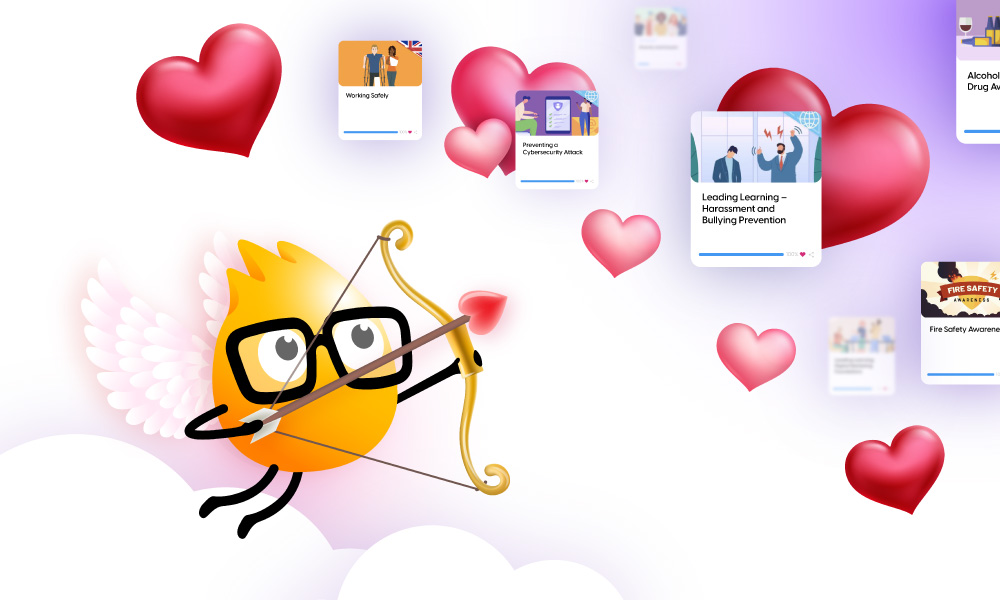The Foundations of Learning: When People Learn
Bridging the Gap Between Learning and Doing
In the past two months we have talked about why people learn, and how people learn. In this next installment of our “Foundations of Learning” blog series, I’ll explore what we know about WHEN people learn. This is a topic that came up often during my Instructional Design undergraduate degree program, where I learned the importance of making skills training applicable. However, it took me a while to put these principles into practice. (The irony of this isn’t lost on me!)
Fresh out of college, l came into the workforce with big ideas, intense motivation, and an eagerness to make training a known department in my organization. And yet, no matter how many PowerPoint decks, videos, workshops, or e-Learning courses I put in front of my learners, my training didn’t seem to make much impact.
What I found in my first few years as an Instructional Designer was that, while adults can certainly learn from reading a book, listening to audio, or watching a video – and many of them can even prove they learned by recalling the information when asked – most training requires adults in the workforce to DO something with the new skills they just learned. This is where I found a disconnect.
To figure out how to bridge the gap between learning and doing, I kept asking why. My curiosity paid off. Even though my professors had taught me about simulators and the importance of applying skills, it was as if I had forgotten, or maybe it even went over my head a bit. It was as if I had to live the struggle myself for the knowledge to stick. Go figure!
Once I figured it out, I began preaching this instructional design advice to anyone who would listen: people, especially adults, learn by DOING. There is one other key ingredient to making learning stick through application, and that is meeting needs in real time. But we’ll cover that later in the blog.
Knowledge Transfer Through Sandbox Learning
Giving the learner the ability to apply the skills you just introduced in a SAFE SPACE is key to the knowledge transfer, and new skills “sticking.” When I say “safe space” I am referring to a place, interactive simulations, practice area, sandbox environment, etc., where it is ok for learners to make mistakes – where little to no consequence occurs if they mess up. The learner knows they won’t cause trouble by practicing the skill, which gives them the confidence and motivation to try, try, and try again – until they get it.
Now, I recognize that this isn’t always easy to accomplish, but what I can say from my 15 years of experience is that the more you look for a solution to do this, the easier it gets. Get creative, think about how you can offer opportunities to allow learners to practice; Don’t give up! The more you do this, the more quickly you will think of creative ways to allow learners to practice.
Practice Makes a Perfect Pizza
Another question I’m often asked is, “How do I make this scalable?”
I would argue that in many instances, you can add some sort of interactive component to enhance your e-Learning design approach. Not many of us have access to “practice rooms, “slow lines” (think manufacturing production lines), or the much-sought-after simulator. The truth is those assets can be expensive. However, we can often break down process into simple tasks and have learners do something with the information that is needed to complete the task.
For example, a client needed to reduce pizza creation times, upskill new hires more quickly, and decrease the amount of time managers and team leads were pulled off the floor for training. Using Content Authoring Tools, I built interactive components that required learners to practice building a pizza using matching and order sequencing. Strategically using interactive e-Learning components allowed learners to practice memorizing the exact weights of ingredients and the order they should be placed on the pizza dough, ensuring quality pizza in a timely fashion. When learners had the ingredients successfully memorized, they found that they no longer needed to lean on cheat sheets, job aids, or other external resources.
The beauty of the training was that it allowed new hires to practice building pizzas before they even hit the kitchen. Ultimately it allowed them to safely apply the information we give them without any of the waste that can occur when someone puts too much sauce on a pizza, or messes one up completely. Learners were able to try as many times as they liked, until they got it right. They showed up better prepared to build pizza to quality standards, with no need for kitchen space, or to take a shift lead or manager off the floor for initial training.
From a learner morale perspective, this approach also helped build confidence. New employees building pizzas online didn’t have to worry about being embarrassed when they do mess up. After all it was only a matching game in the LMS! Practice my friends, really does make perfect when it comes to transfer of knowledge and learning new skills.
The Best Time To Learn is Whenever Learners Need To…
The key ingredient to when people learn, regardless of age, is introducing the skill or information needed, WHEN it is needed. Those who need a new skill while problem solving, often need it in the moment, and we as trainers need to be ready for this. Yes, introduce them to the concepts early, but be ready to help them in the moment of application. Introducing information prior to the time that learners must apply it can be helpful, but simply putting learners in front of an e-Learning course and expecting them to remember and apply what they need to know at some undetermined later date is unreasonable and unrealistic. This is especially true for kinesthetic skills – otherwise known as physical skills – such as building a gear, an engine, or a pizza! But let’s take a moment to realize this is also true for learning new software interfaces, customer service processes, etc.
Instructional Designers should also ensure that the knowledge and information learners need to succeed is in one central location and easy to access. This is HUGE. If it is hard for learners to remember where to find the information they need, we have already lost the battle. Think of job aids, cheat sheets, and shortcut documentation that is easy for them to find so that they can get to it when they need it.
The best part of giving learners the resources they need when they need it, is that it builds trust with you, the trainer, or your L&D team. When a learner knows that they can receive help when it matters, they will be more willing to learn in the future. And that my friends, is a wonderful feeling. Happy training and happy learning!





